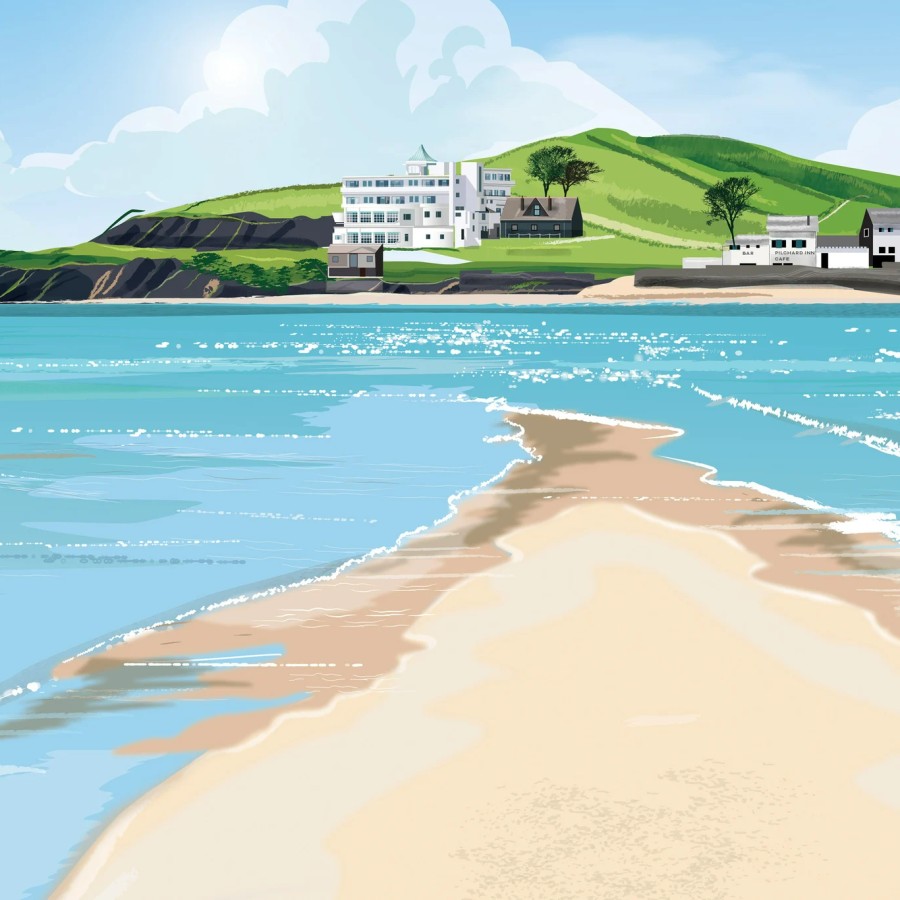
England has many tidal causeways, renowned for being on TV when forgetful drivers don’t check the times and get stranded, as the waters rush in. In a nutshell, a tidal causeway is when you can walk to the island at low tide, but have to wait for the tide to go out again before you can get back (unless you have a boat!)
- Burgh Island (Devon) is a tidal island off the South Devon coast, near a small seaside village called Bigbury-on-Sea. There are a few buildings on the hotel including a pub. The best-known is an art-deco hotel (easy to recognise as it’s often featured in Agatha Christie TV dramas). The island has a unique sea tractor that can ferry guests across, when the tide is in.
- St Michael’s Mount (Cornwall) is very recognisable and is linked to the town of Marazion via a causeway. Managed by the National Trust, dogs are not allowed a lot of the year as there are not many shady areas, so it’s done for their safety in warm weather. In 1755, a Lisbon earthquake caused a tsunami here and the the sea rose 6 feet in 10 minutes, rising and falling for 5 hours, causing loss of life and property.
- Mersea Island (Essex) is a hidden gem, you would never think that Essex had its own Caribbean-like island! Just 9 miles south of Colchester, it’s split into east and west Mersea, connecting to the mainland by the Strood, a causeway that floods at high tide. Like Norfolk and Suffolk, it’s famed for its pretty pastel-coloured beach huts.
- Asparagus Island (Cornwall) is indeed named after the wild asparagus that grows here. It lies on the western side of the Lizard Peninsula.
- Horsey Island (Essex) is part of Hamford Water National Nature Reserve, and permission is needed to visit, as it’s managed by Natural England.






